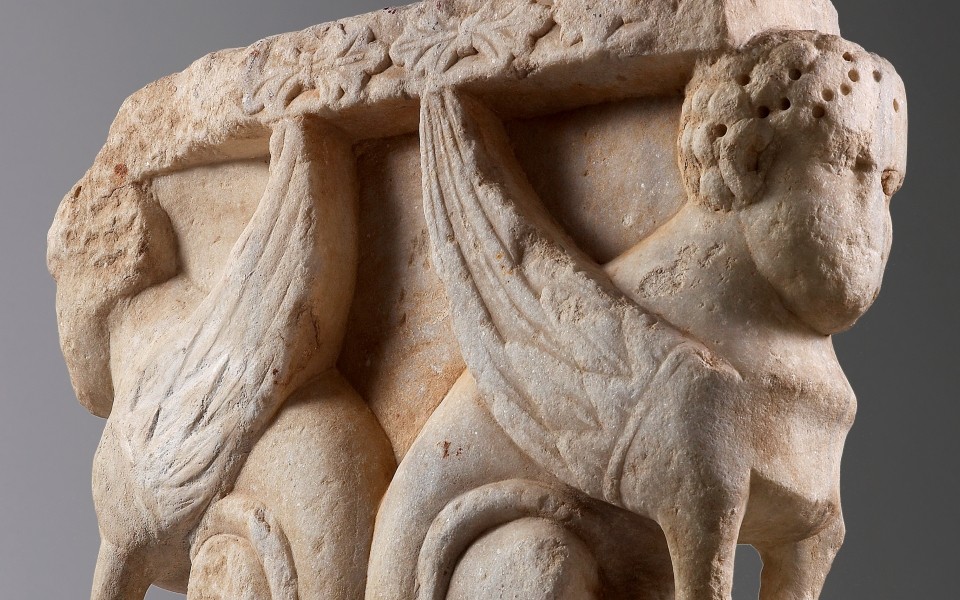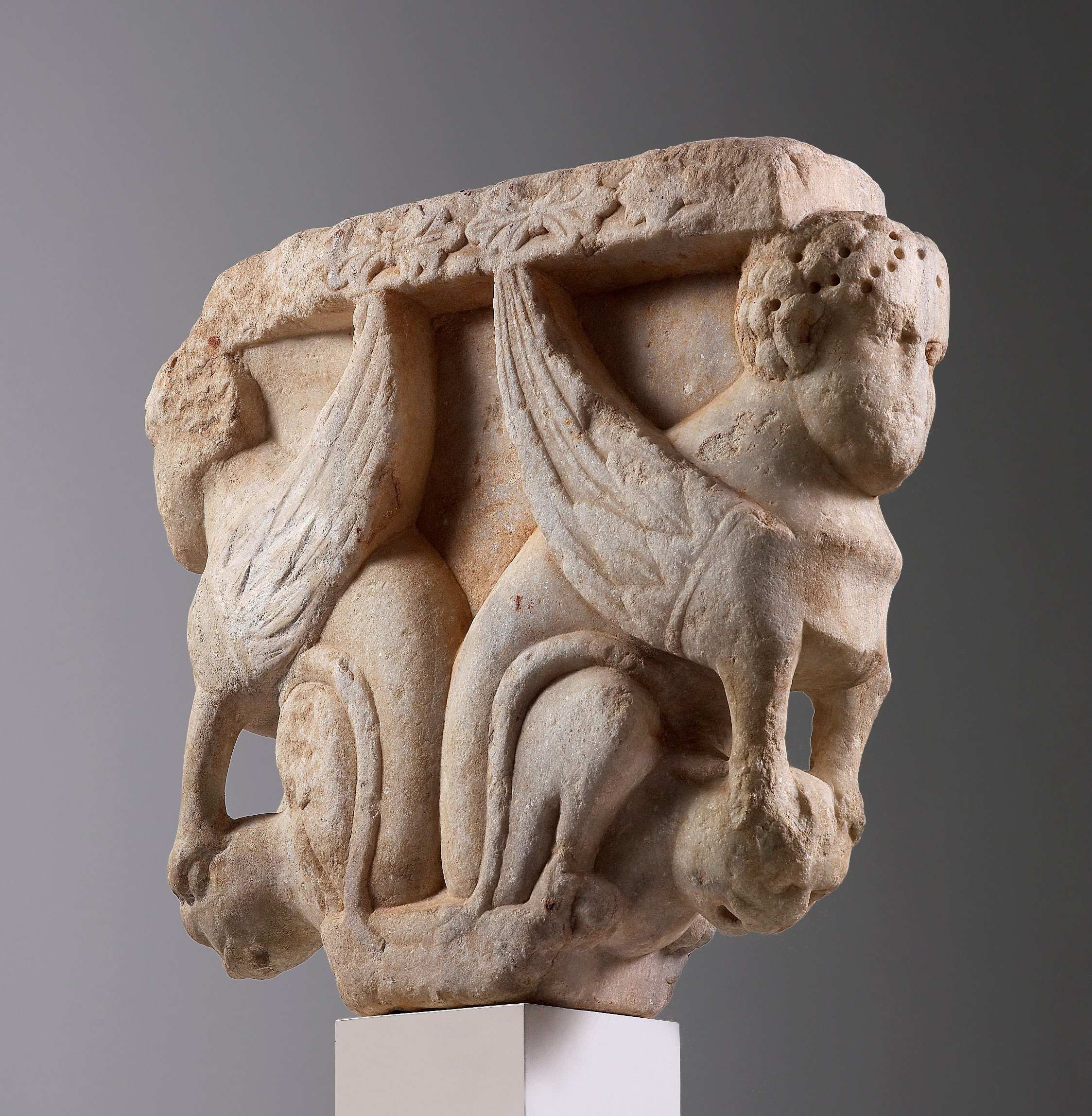
A Rare Capital with Sphinxes
This outstanding marble capital, show the addorsed and firmly sat figures of two winged lions with human face – clearly recognizable as sphinxes – clawing the head of a snarling beast, perhaps a lion or a molossian. The nearly trapezoidal silhouette of the whole capital, which belongs to the group of the so-called ‘crutch-shaped’ capitals of Byzantine origin, was adopted – in Western context with anthropomorphic, zoomorphic or fantastic subjects – for setting up cloisters, loggias or simple windows. In Puglia the representation of the sphinx is widely attested since the 11th century – even though often alternated with symbolic winged animals as the griffon, the lion and sometimes the basilisk – and the use of similar capitals is largely documented, originating a typological model characterized by a symmetrical pattern.

In this regard it is worth to remember some of the most illustrious example and more precisely: the low-relief depicting two opposing sphinxes located on the right side of the Episcopal Seat in the Cathedral of San Sabino in Canosa di Puglia, commissioned to the sculptor Romualdo by the Bishop Ursone between 1080 and 1089 and the fragmented ‘crutch-shaped’ capital with leaning sphinxes coming from the Basilica of San Nicola, from the second quarter of the 11th century circa and attributed to the workshop of Master Acceptus. About the formal treatment an even more relevant similarity can be found with the ‘crutch-shaped’ capital (ca. 1130/40) – rediscovered in the deposits of the Basilica di San Nicola – with two addorsed figures of anthropomorphic monkeys. Another important confrontation can be made with the magnificent ‘crutch-shaped’ capital (1120-1130 circa) with slaves figures and masks, preserved at the Pinacoteca Metropolitana in Bari: a work which can be attributed without any doubt to the Maestro della Cattedra di Sant’Elia.
This present capital echoes also the telamons supporting the Episcopal Throne in the Basilica of San Nicola in Bari: specially for the ‘boxy’ appearance, the protruding cheekbones, the carefully emphasized eyes and the thick clumped hair, still perfectly intact close to the neck.
On the basis of this confrontations it must be therefore be concluded that the work here examined is a precious addition to the Apulian Romanesque sculpture production and – more generally – an important example of Southern Italian medieval art.
Detailed report by Dr. Luca Mor.
Puglia workshop
CAPITAL WITH SPHINXES
Carved marble
1140/50 ca.
Cm 48 ×13 x 41 h
NO LONGER AVAILABLE
© 2013 – 2023 cesatiecesati.com | Please do not reproduce without our expressed written consent
Alessandro Cesati, Via San Giovanni sul Muro, 3 – 20121 Milano – P.IVA: IT06833070151